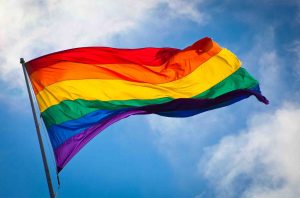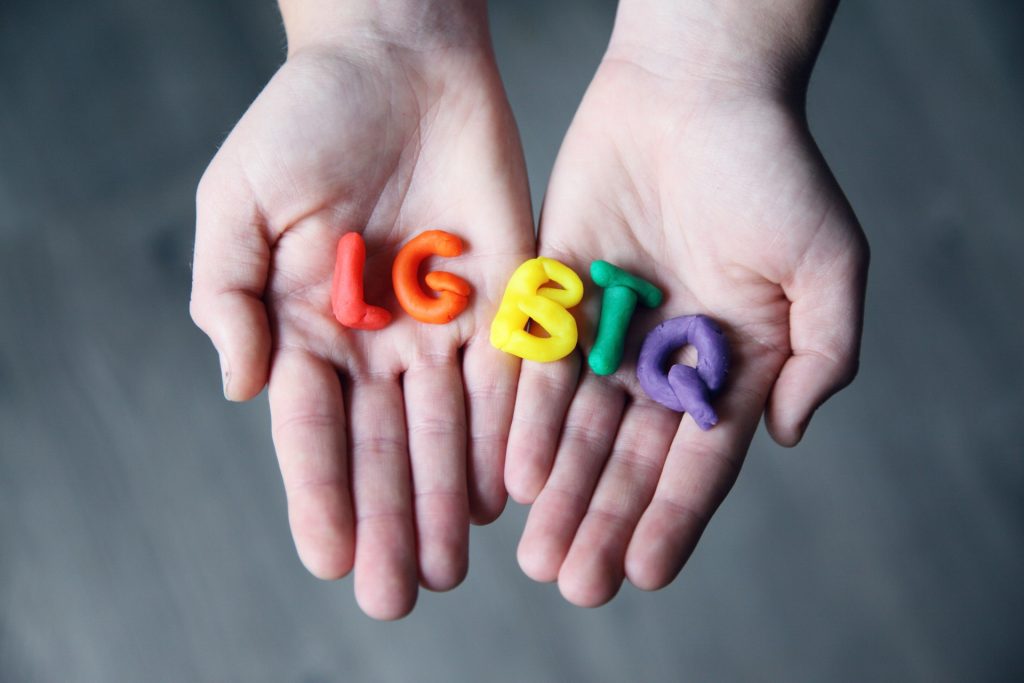LGBT…QI – what? It’s perfectly okay if you feel a little confused with all the terms people use to describe their gender or sexual orientation. Cis people in particular often feel overwhelmed when it comes to sexual and romantic orientation, attraction, and queer behavior. That’s why it’s important to get to grips with the terms and expand your vocabulary a bit. And that’s why we wrote this overview for you.
First of all, the following terms and definitions are constantly evolving, changing, and often mean different things to different people. They are only meant to serve as a starting point for discussion and better understanding.
Gender Identities
Cisgender
A description of a gender identity in which people identify with their sex assigned at birth. This term is used to highlight the privilege of people who are not trans. i.e., do not identify as “male or “female” at birth.
Transgender
This term refers to a variety of different identities of people who perceive their social sex (gender) to be different from their biological sex and/or express their social sex differently from it – for example, through appropriate social behavior or gender reassignment. Not all people who see themselves as transgender undergo gender reassignment. Salopp one could also say: Transgender are in the wrong body.
Trans man
Trans* in connection with man or male is a possible self-designation of men or people who see themselves predominantly as male, who were registered at birth with another gender that does not fit them or does not fit them completely.
Example: a person who was registered as female at birth and self-identifies as male is a trans man.
Trans woman
Trans* in connection with woman or female is a possible self-designation of women or people who see themselves predominantly as female, who were registered at birth with a gender that is not or not completely suitable for them.
Example: a person who was registered male at birth and self-identifies as female is a trans woman.
Genderqueer
People who are genderqueer often perceive their gender as fluid, meaning that it can change at any time. Genderqueer can also describe a position that challenges one’s gender identity during a period of time or permanently.
Non-binary
People who do not assign themselves to a gender and do not identify with the female or male gender. Non-binary is an umbrella term for people who do not identify as male or female, or do not identify exclusively as male or female. The different gender identities on this spectrum are very diverse. For example, they may locate themselves between male and female or outside of these categories, encompass both categories (bigender), or assign themselves to no gender at all (agender). For some individuals, gender identity is always changing (genderfluid). Some non-binary individuals see themselves as trans* individuals, some do not.
Sexual Orientation

Asexual
Someone who identifies as a member of the asexual community feels little or no sexual attraction to others of any gender. Asexuality is a broad spectrum. People who identify as asexual may also identify with one or more other terms that more accurately describe their relationship to sexual attraction.
Bicurious
Refers to people who question or explore their bisexuality, often out of curiosity about their own romantic or sexual attraction to people of the same or opposite sex.
Bisexual
A sexual orientation that describes people who are sexually, romantically, or emotionally attracted to people of more than one gender.
Bisexuals are people who are attracted to a variety of people with a similar or different gender than their own.
Fluid
This term refers to the fact that sexuality, sexual attraction, and sexual behavior can change over time and depending on circumstances. It is used to describe people who experience changes in their sexuality, sexual attraction, or sexual behavior in different situations or over the course of their lives. It is common for someone to describe their sexuality as fluid.
Heterosexual
The term heterosexual describes people who feel a sexual, romantic, or emotional attraction to people of the “opposite” sex (e.g., male vs. female, man vs. woman) or of a different gender. Both people who identify as cisgender and people who identify as transgender can be heterosexual.
Both cisgender-identified and transgender-identified people can be heterosexual. This category of sexual orientation is commonly referred to as heterosexual.
Gay
An outdated term used in the fields of medicine and psychology to refer to people who are sexually, romantically, or emotionally attracted to people of the same or similar sex.
Lesbian
A woman or person identified as a woman who is sexually, romantically, or emotionally attracted to people of the same or similar sex. However, it is important to note that not all lesbians identify as women; some define their identity as non-male or femme rather than female or feminine.
Some women who identify as lesbian prefer the term “lesbian,” while others prefer “queer” or “gay.” It is also best to ask what word or term someone uses to describe themselves. In medicine and psychology, this sexual orientation used to be called homosexual. However, many now find the term “homosexual” to be outdated and offensive, which is why it should not be used for LGBTQIA+ people.
LGBTQIA+.
The acronym that often refers to people who do not identify exclusively as heterosexual or exclusively cisgender. The letters of the LGBTQIA+ acronym stand for lesbian, gay, bisexual, transgender, queer or questioning, intersex, and asexual. The + symbol in LGBTQIA+ refers to the fact that there are many sexual orientations and gender identities that are part of the broader LGBTQIA community but are not listed as part of the acronym.
Pansexual
A term used to describe people who may be sexually, romantically, or emotionally attracted to anyone, regardless of their gender, sexuality, or sex life.
Passing
The term “passing” refers to society’s perceptions and assumptions about a person’s sexuality or gender. Specifically, this term is most often used to discuss the frequency and extent to which an LGBTQIA+ person is perceived or assumed to be heterosexual or cisgender.
It is important to note that some LGBTQIA+ individuals desire to come out as heterosexual, while others do not. In fact, being perceived as heterosexual or cisgender can be a source of discomfort and discrimination for some people in the LGBTQIA+ community.
Queer
An umbrella term used to describe people who are not exclusively heterosexual. The term “queer” (the Q in LBGTQIA+) recognizes that sexuality is a spectrum. The use of the term opens up options beyond lesbian, gay, and bisexual to people who do not fit neatly into these categories or prefer a category that is not dependent on sex and gender.
While the term used to have negative and pejorative connotations, queer is now once again a common and socially accepted term for LGBTQIA+ people who refer to themselves and their community in this way.
Questioning
The process of being curious or exploring an aspect of sexuality or gender. Questioning can also be used as an adjective to describe someone who is currently exploring their sexuality or gender.
